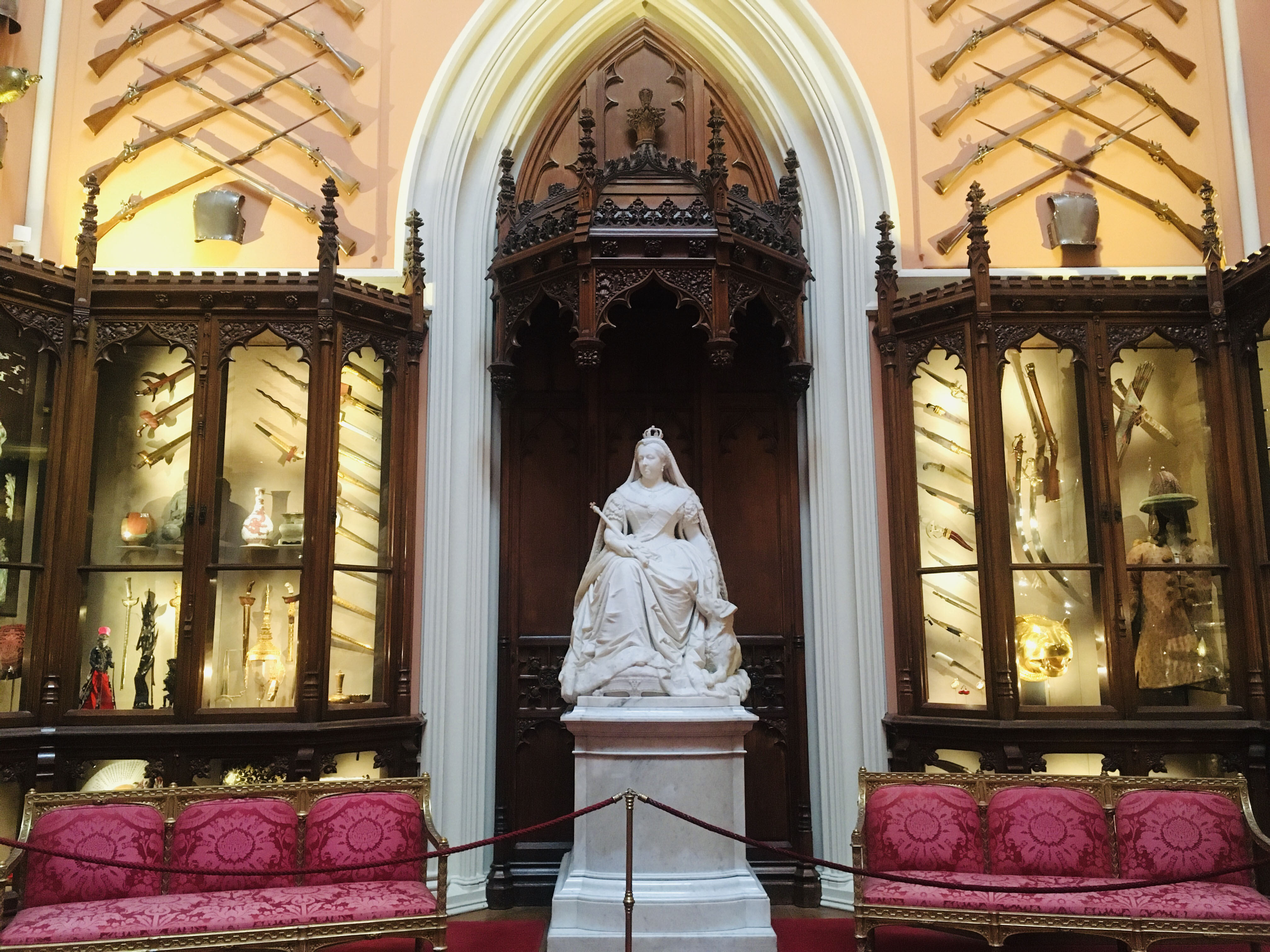
Grand Vestibule: The British Monarchy and the World
The Grand Vestibule at Windsor Castle reflects interaction between the monarchy and the wider world
RANGI HETET (B. 1937)
'Te Tiriti' (The Treaty)
1990RCIN 74069
A wooden openwork humanoid figure named 'Te Tiriti' (The Treaty) on a rectangular stand. With domed head, haliotis-shell eyes and a plain body. Carved on both sides: on one side, the hands hold an axe, and on the other a quill and scroll. The arms and legs are carved with a relief pakura design.
The back-to-back figures represent the partnership of the Treaty of Waitangi. The figure holding the quill represents Europeans, while the opposite side holding an adze (axe) symbolises the Maori people. Both figures are part of each other, providing the balance of the piece. The figure is carved in the Northland style, acknowledging the area in which the Treaty was signed.
The Treaty of Waitangi was signed by the British Crown and a number of Maori chiefs on 6 February 1840, and was followed by British annexation of New Zealand in May 1840.
The back-to-back figures represent the partnership of the Treaty of Waitangi. The figure holding the quill represents Europeans, while the opposite side holding an adze (axe) symbolises the Maori people. Both figures are part of each other, providing the balance of the piece. The figure is carved in the Northland style, acknowledging the area in which the Treaty was signed.
The Treaty of Waitangi was signed by the British Crown and a number of Maori chiefs on 6 February 1840, and was followed by British annexation of New Zealand in May 1840.







